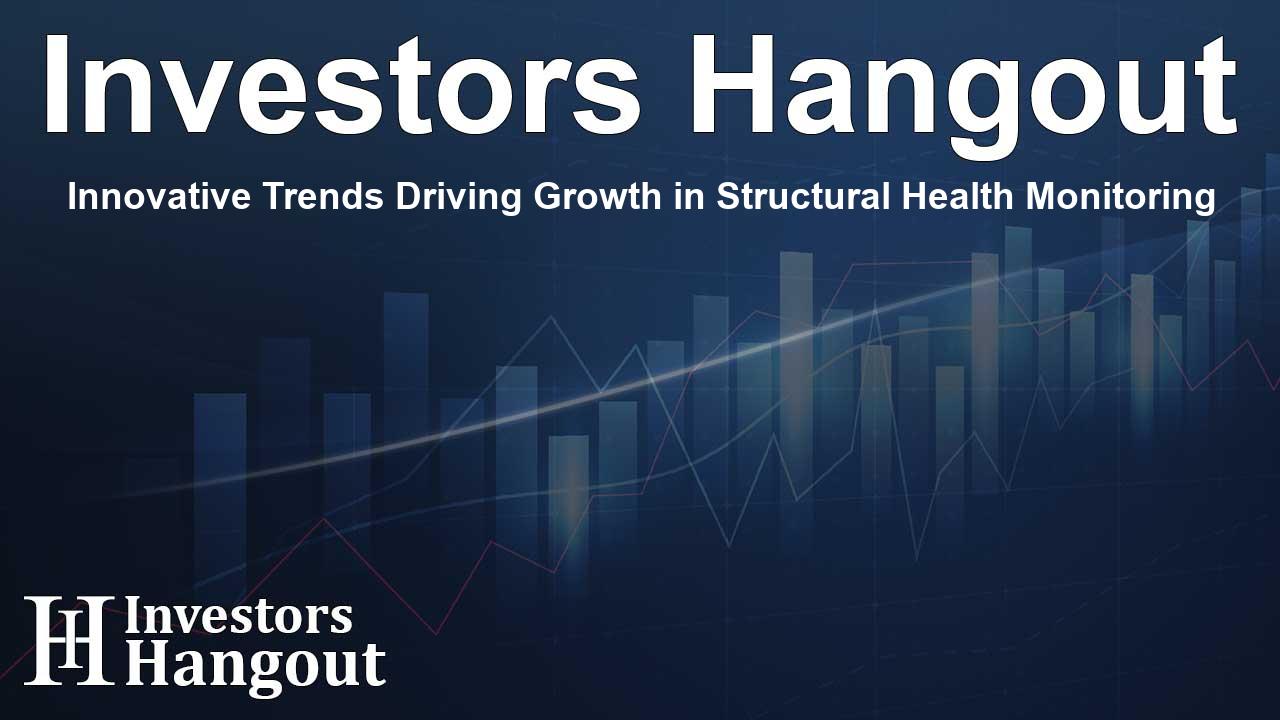Innovative Trends Driving Growth in Structural Health Monitoring

Understanding the Growth of the Structural Health Monitoring Market
The structural health monitoring market is poised for significant expansion, projected to increase by USD 2.62 billion in the coming years. This growth is strongly influenced by the necessity for infrastructure safety and the integration of innovative technologies like artificial intelligence (AI).
Market Dynamics and Driving Forces
A surge in infrastructure development and maintenance demands is driving the growth of the structural health monitoring (SHM) sector. As urban areas expand, the need for sustainable monitoring solutions becomes critical. SHM systems play an essential role in ensuring the long-term integrity of structures, including bridges, dams, and buildings. These systems rely on advanced technologies, enabling real-time data collection and analysis for proactive maintenance measures. The trend towards smart city initiatives also emphasizes the importance of SHM, as these technologies facilitate ongoing assessments of infrastructural health.
The Role of AI in Market Trends
Artificial intelligence is transforming how structural health monitoring systems operate. By employing machine learning algorithms, these systems can analyze vast amounts of data more accurately, predicting potential failures before they occur. AI-driven analytics enhance the precision of monitoring, leading to better decision-making for maintenance and upgrades. The fusion of IoT devices in combinatory setups strengthens the infrastructure reliability, further supercharging market growth.
Key Market Trends Enhancing SHM Adoption
Several significant trends are currently shaping the SHM landscape. Firstly, the adoption of wireless sensor networks is revolutionizing data acquisition, reducing installation costs and facilitating easier access to real-time data. With the rise of energy harvesting technologies, sensors can operate efficiently without the need for continuous external power, making them ideal for remote locations. Furthermore, predictive modeling is emerging as a critical trend in preventive maintenance, providing insights into structural behaviors and predicting future needs.
Challenges Facing Market Expansion
Despite the promising advancements in structural health monitoring, certain challenges hinder broad adoption. Budget constraints, especially for smaller businesses, can limit access to high-quality monitoring services, leading to potentially costly maintenance issues. Additionally, the lack of standardization in SHM systems poses a significant barrier, as companies grapple with integrating new technologies into established infrastructure.
The Broad Spectrum of SHM Applications
SHM systems are utilized across various industries, including aerospace, energy, and mining. Each application has unique requirements regarding sensor technology, data acquisition methods, and real-time analytics. In aerospace, for example, robust SHM solutions are crucial for maintaining the safety and efficiency of aircraft, while in energy, monitoring systems ensure the reliability of power generation facilities.
Future Prospects in the SHM Landscape
As governments and private sectors commit more resources to safety regulations and infrastructure upgradation, the SHM market is set for a significant boost. The continuous development of innovative technologies ensures that this sector remains at the forefront of engineering advancements, offering various opportunities for ongoing investments. Market players are focusing not only on product innovation but also on enhancing service delivery to meet the rising demand for reliable infrastructures.
Frequently Asked Questions
What is driving the growth of the structural health monitoring market?
The increase in infrastructure development, the need for safety regulations, and advances in AI technology are primary drivers of market growth.
How does AI enhance structural health monitoring?
AI improves accuracy in data analysis and predictions, enabling proactive maintenance measures and increasing infrastructure reliability.
What challenges does the SHM market face?
Key challenges include budget constraints for smaller businesses and a lack of standardization in monitoring systems.
Which industries benefit from SHM technologies?
Industries such as aerospace, energy, mining, and civil engineering utilize SHM technologies to ensure the safety and integrity of their structures.
What are the future prospects for the SHM market?
The SHM market is expected to grow significantly, driven by ongoing technological advancements and increasing investments in infrastructure safety measures.
About The Author
Contact Logan Wright privately here. Or send an email with ATTN: Logan Wright as the subject to contact@investorshangout.com.
About Investors Hangout
Investors Hangout is a leading online stock forum for financial discussion and learning, offering a wide range of free tools and resources. It draws in traders of all levels, who exchange market knowledge, investigate trading tactics, and keep an eye on industry developments in real time. Featuring financial articles, stock message boards, quotes, charts, company profiles, and live news updates. Through cooperative learning and a wealth of informational resources, it helps users from novices creating their first portfolios to experts honing their techniques. Join Investors Hangout today: https://investorshangout.com/
The content of this article is based on factual, publicly available information and does not represent legal, financial, or investment advice. Investors Hangout does not offer financial advice, and the author is not a licensed financial advisor. Consult a qualified advisor before making any financial or investment decisions based on this article. This article should not be considered advice to purchase, sell, or hold any securities or other investments. If any of the material provided here is inaccurate, please contact us for corrections.
